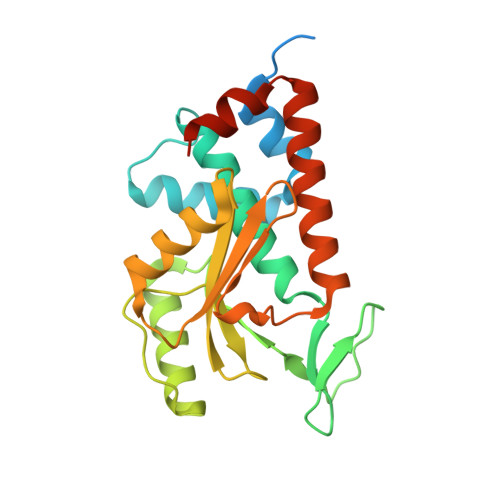Aryl and Arylalkyl Substituted 3-Hydroxypyridin-2(1H)-ones: Synthesis and Evaluation as Inhibitors of Influenza A Endonuclease.
Sagong, H.Y., Bauman, J.D., Nogales, A., Martinez-Sobrido, L., Arnold, E., LaVoie, E.J.(2019) ChemMedChem 14: 1204-1223
- PubMed: 30983160
- DOI: https://doi.org/10.1002/cmdc.201900084
- Primary Citation of Related Structures:
6NEL, 6NEM - PubMed Abstract:
Seasonal influenza infections are associated with an estimated 250-500 000 deaths annually. Resistance to the antiviral M2 ion-channel inhibitors has largely invalidated their clinical utility. Resistance to neuraminidase inhibitors has also been observed in several influenza A virus (IAV) strains. These data have prompted research on inhibitors that target the cap-snatching endonuclease activity of the polymerase acidic protein (PA). Baloxavir marboxil (Xofluza®), recently approved for clinical use, inhibits cap-snatching endonuclease. Resistance to Xofluza® has been reported in both in vitro systems and in the clinic. An X-ray crystallographic screening campaign of a fragment library targeting IAV endonuclease identified 5-chloro-3-hydroxypyridin-2(1H)-one as a bimetal chelating agent at the active site. We have reported the structure-activity relationships for 3-hydroxypyridin-2(1H)-ones and 3-hydroxyquinolin-2(1H)-ones as endonuclease inhibitors. These studies identified two distinct binding modes associated with inhibition of this enzyme that are influenced by the presence of substituents at the 5- and 6-positions of 3-hydroxypyridin-2(1H)-ones. Herein we report the structure-activity relationships associated with various para-substituted 5-phenyl derivatives of 6-(p-fluorophenyl)-3-hydroxypyridin-2(1H)-ones and the effect of using naphthyl, benzyl, and naphthylmethyl groups as alternatives to the p-fluorophenyl substituent on their activity as endonuclease inhibitors.
- Department of Medicinal Chemistry, Ernest Mario School of Pharmacy, Rutgers, The State University of New Jersey, 160 Frelinghuysen Road, Piscataway, NJ, 08854-8020, USA.
Organizational Affiliation:



















